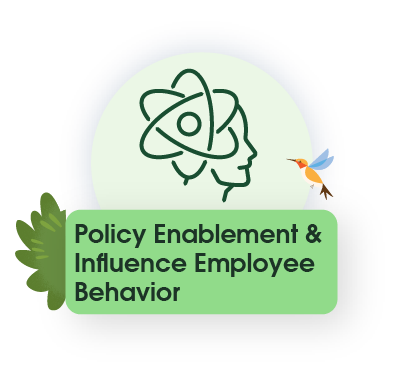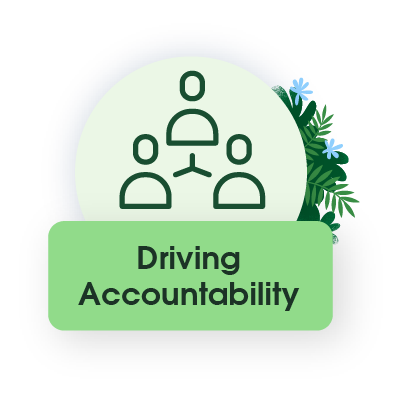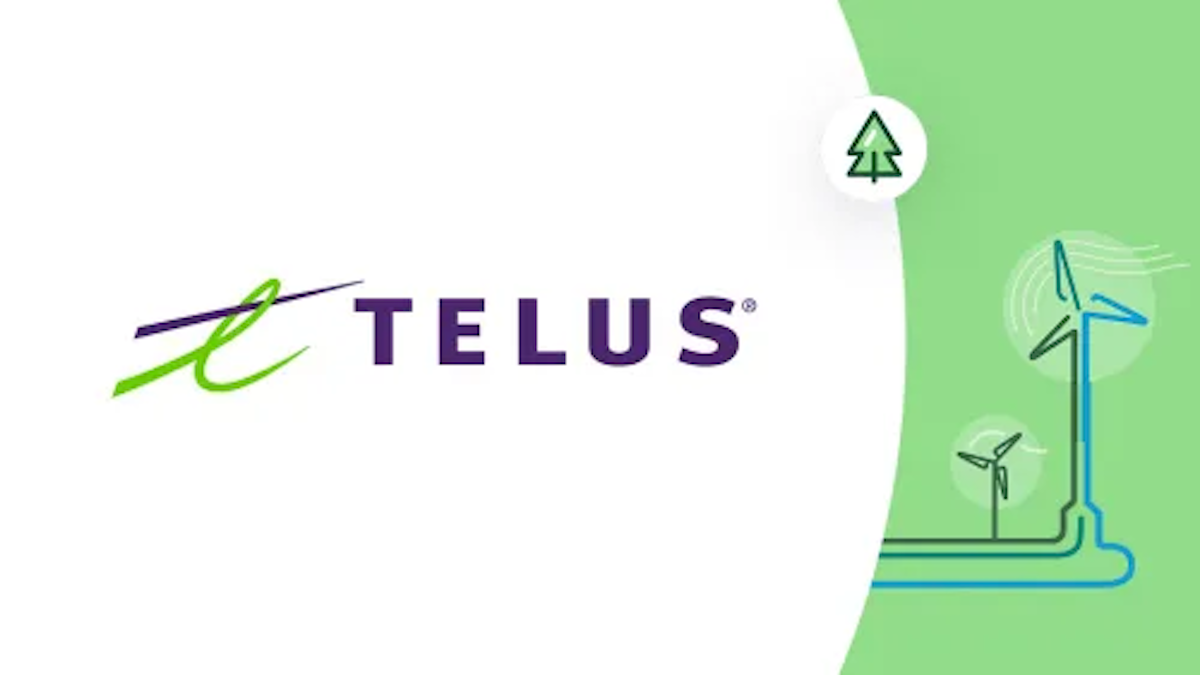A 5-Step Guide to Sustainable Business Travel
As global environmental, social, and governance (ESG) regulations increasingly require companies to report the environmental impact of their carbon emissions, executives are asking one key question: How can we reap the benefits of in person collaboration without increasing our carbon footprint?
Taking a fresh look at your company’s travel data, policies, and tools is a great place to start. The good news is you won’t have to ground your employees. Instead, you can pull from tools around you, such as redefining what “purposeful” travel means, promoting and enabling low-emissions transportation options, and working with partners outside of your organization. But first, you’ll need to account for the carbon you’re currently emitting from business travel.
In this guide, we’ll show you how you can balance your need for business travel with your ESG commitments and how to get started tracking and reducing your entire carbon footprint.

Step 1: Think digital first.

“Business will always need travel, but that travel can and should be done in a sustainable way. Enabling virtual collaboration and a digital-first work environment is the first step toward defining what purposeful travel means for your company.”
By embracing a digital HQ, you can give employees the resources and tools they need to stay productive. In this digital-first model, organizations facilitate hybrid work and enable virtual collaboration between internal and external teams. A single digital collaboration tool that provides easy access to documents, data, and group conversations across your company’s entire ecosystem improves productivity and, in the vast majority of cases, eliminates the need to gather in person.
By enabling employees to work remotely, organizations can also improve business performance and reduce costs. When companies find ways to be more efficient — with space, equipment, materials, packaging, time, and so on — they can see lower operating costs as a result.
The concept of a digital HQ works best when talking about business travel for the purpose of collaboration. It requires the right technology to be successful, but even that has its limits. If you’re trying to help teams bond, build relationships with clients, attend a large conference, or physically set up a space, travel may still be necessary, and that’s okay. Having a digital HQ allows us to rethink and redefine purposeful travel but not eliminate it altogether.
Sustainability Efforts Organizations Are Making to Reduce Their Environmental Impact









Step 2: Prioritize and promote low-emissions travel.

On average, taking the train emits one-sixth of the greenhouse gas emissions as taking a short-haul flight.
Emissions from Different Modes of Transport






Begin by partnering with your Travel Management Company to collect and analyze travel emissions data across all travel verticals and categories, such as air, hotel, ground, and rail. Analyze where the majority of your emissions are coming from and what the top origins and destinations are. From there, you can identify the most impactful emissions reduction pathways to decarbonize and promote lower-emission alternatives.
“You’ll need to dig into the data to consider where, why, and how your employees travel, defining what purposeful travel looks like for your specific company,” said Sabineu. “Travel managers play a critical role in tracking and reporting emissions while also enabling and encouraging employees to make greener choices.”
With your data insights in hand, you should assemble and consult a team of internal stakeholders from key business units such as travel, procurement, sustainability, finance, marketing, and sales. Gain a solid understanding of what drives them to opt for travel over virtual communication. With the input of your stakeholders, define specific attributes of purposeful business travel for your company. Then, you can update the policy and program guidance across your online booking tools to ensure recommendations are available at the point of sale. This is where decisions are being made by traveling employees.
Enable responsible choices with technology.
Your employees will help you reduce travel emissions so long as you provide a seamless process. Using trusted AI, you can make it easy for your employees to make greener choices. Here are a few ways to optimize your booking tool with AI:
- Personalize recommendations for eco-friendly accommodations.
- Identify and eliminate of unnecessary expenses.
- Optimize travel routes and modes of transportation.
Using the right data to power your AI is critical. By understanding where your travelers are going and what alternatives exist in those locations, you can bring visibility to lower-emissions travel options. Then, you can program this guidance into your online booking tool.
For example, you can optimize your online booking tool so that it sorts transportation options by emissions output instead of price or carrier. Change recommendations so they default to carbon-friendlier choices, such as sorting flights to show lower-emissions options first. Program specific, data-driven nudges into the online booking tool at the point of sale. This empowers employees to make smart decisions during the booking process with a platform that promotes low-carbon travel options.

Salesforce Business Travel Reduction Program

Lean on our digital-first culture, travel policy, and technology to maximize more sustainable choices.

Optimize our online booking tool to recommend lowest-emission modes of travel on routes where a more sustainable form of transportation is a viable alternative.

Accelerate awareness and visibility with leadership through the ESG Executive Compensation program and drive meaningful results with greater accountability.

Continue to build out a Sustainable Aviation Fuel program and strategy, making strategic investments with supplier-customers across our value chain to drive innovation of decarbonize aviation.
Step 3: Measure emissions and track progress to stay accountable.

“Being able to visualize data and show it to key decision makers — that's what enables change to happen. Having visibility into our carbon emissions has been a game changer.”

Not all platforms can handle scope 3 emissions data, even though scope 3 emissions account for more than 70% of many businesses’ total emissions.

Deloitte Germany makes data-driven decisions to reduce business travel carbon emissions.
Deloitte Germany is using the comprehensive insights that Net Zero Cloud reveals to identify the highest impact areas for improvement. Traditionally, the organization has reported its carbon balance sheet annually, with team members spending four to six weeks pulling together and calculating the year’s data.
With Net Zero Cloud, however, Deloitte Germany can now share emissions data every month and take immediate action when it identifies a problem area. Net Zero Cloud also presents guided improvement actions for each of Deloitte Germany’s engagement managers. And, the company’s carbon footprint is managed and accounted for within the same solution.
Since piloting Net Zero Cloud in 2021, and by monitoring the firm’s travel rules, Deloitte Germany has massively reduced the number of flight emissions by consultants and partners. Using Net Zero Cloud, Deloitte Germany is now able to map its GHG emissions on the individual client engagement level and provide the data to 1,500-plus stakeholders and project team members.
“The impact we have on our internal numbers is little when compared to our impact on the client side,” said Maic Stohr, who drives business development around the Salesforce space for Deloitte Germany, focusing on stakeholder experience. “We do sustainability audits and consulting for clients, and in our organization, sustainability is one of the six strategic offerings we want to deploy at scale in the next five years.”

Step 4: Lead the way with partners.
Lead by example with your partners, vendors, and suppliers by setting boundaries as to when you expect in-person versus virtual communication. A lot of companies — especially consultancies — will follow their clients’ lead when it comes to travel, so be sure to let them know early on under which circumstances — if any — they should appear in person.
When negotiating, set clear business travel standards. In addition to laying out the circumstances where travel will be permitted, specify how many people should travel and by which means. For example, if taking the train between two metropolitan cities is feasible, you can make that the preferred (or even required) mode of transportation.
What Is Supply Chain Sustainability — And Why Do Businesses Need It Now?

Step 5: Look beyond your organization.
It’s probable that your company will still produce travel-related emissions even after you’ve done everything we’ve suggested here. Don’t let that sidetrack you.
Seek out external initiatives like the Sustainable Aviation Buyers Alliance, where you can help reduce travel-related emissions on a broader scale. Collaboration and advocacy can drive systemic change and lead to the broader availability of carbon-neutral transportation options — even with air travel.
With sustainable aviation fuels (SAF), carriers can reduce the carbon footprint of traditional aviation fuel by up to 80% while leveraging existing infrastructure with a drop-in replacement for more carbon-intensive fuels. The challenge is that SAF is expensive to produce, which is why it comprises less than 0.1% of current consumption. Enter Clean Skies for Tomorrow (CST) Coalition, a partnership between climate experts, CEOs, and government leaders to help the aviation industry achieve net zero emissions by 2050.
Collaboration drives change.
Compensate for remaining emissions.
Offsetting your remaining carbon emissions by purchasing carbon credits is the last step toward achieving net zero carbon emissions. Keep in mind that carbon credits aren’t created equal in terms of impact. Avoidance offsets, for instance, include limiting tree harvesting or stopping untouched land from being converted into farmland. Removal credits include investing in healthy forests and oceans, both of which are natural carbon sinks that efficiently absorb CO2.
Although purchasing a combination of avoidance and removal credits may be necessary in the short term, aim for only removal credits for the long term. This is because removal credits are designed to extract CO2 from the atmosphere, whereas avoidance credits prevent carbon from being emitted in the first place. To achieve a 1.5°C goal, we need to purchase both avoidance and removal credits now. But ultimately, avoidance should come from your actions, not your budget. So as your company puts enough policies in place to avoid roughly 90% of your emissions, you can gradually move your credit dollars away from carbon avoidance and toward carbon removal.
Reducing emissions throughout your organization’s full value chain should be your priority. However, emissions reduction will take time, and doing that alone may not be enough. Organizations should use all the tools they have to work toward the global goal of net zero, including purchasing carbon credits to help compensate for the emissions they haven’t yet reduced and to help scale climate solutions beyond their value chain.
Together, we can go net zero now.
From using the right digital tools that enable working from anywhere to optimizing your travel platform for low-emissions options, you can take steps — today — to reduce your carbon footprint inside your organization and meet reporting requirements. Externally, use your influence to encourage partners in your value chain to cut their own CO2 output, and take it a step further by exploring investments in the Sustainable Aviation Buyers Alliance or similar organizations. Most important, stay accountable for your progress. Set goals, measure results, and iterate on your strategy where necessary.
Net Zero Cloud is a complete ESG management platform that empowers companies to track, analyze, and report reliable emissions data in real time and enables them to meet their ESG goals. The business travel dashboard provides real-time insights into which employees are traveling and by what mode, which departments or geographies are responsible for the most carbon emissions, and insights for you to make decisions that help you achieve lower emissions with various actions and policies.
Net Zero Cloud embeds conversion factors that conform to global standards and uses those factors to convert travel data into emissions data, saving you time and reducing calculation errors. The platform can also provide visibility into emissions data between you and your suppliers, helping your entire ecosystem achieve net zero.
Get trusted reporting and actionable insights on your business travel with Net Zero Cloud.

Ready to get started?
More resources

Learn how Salesforce integrated supplier carbon data into a scope 3 Inventory.

Meet Net Zero Cloud.



